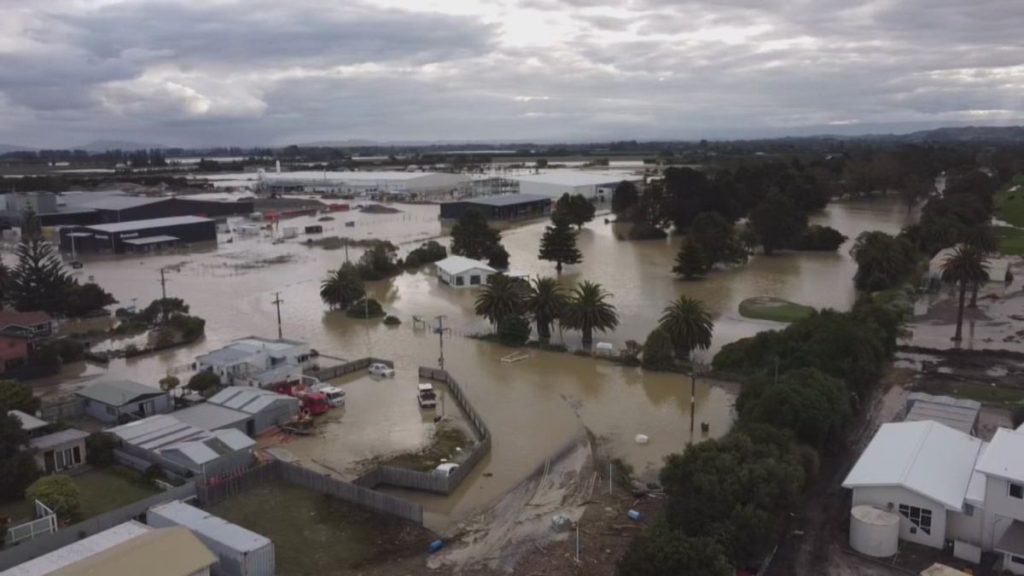How Climate Risks Are Changing Home Buying Decisions: What You Need to Know
Natural disasters are happening more frequently, and their impact is more devastating than ever before. Floods, wildfires, hurricanes, and earthquakes are not just causing destruction to infrastructure—they’re tearing apart entire communities. What’s even more alarming is that many of our homes, the places we live in and invest in, aren’t built to withstand these forces of nature. But here’s the question: Could better housing laws help us protect ourselves from future disasters?
The idea may sound simple, but the reality is much more complex. Housing policies that are proactive, thoughtful, and well-enforced could drastically reduce the damage caused by these events. Imagine a world where communities are not left to pick up the pieces after every disaster because their homes are designed to survive, or at the very least, mitigate damage.
In this article, we’re going to dive into how improving housing laws can directly reduce the damage from natural disasters. It’s not just about building stronger houses—it’s about creating a system of laws that ensure our homes are built to withstand increasingly frequent and severe disasters. These laws can address everything from the materials used in construction to zoning and land-use regulations that prevent building in high-risk areas.
Jenny Schuetz, an expert on housing policy, suggests that integrating climate risk reduction into housing laws can protect communities from future disasters. This is a perspective that’s gaining traction as we realize that housing is not just about shelter—it’s about safety, stability, and resilience in the face of a changing world.
So, the question is not whether better housing laws can protect us from natural disasters, but how quickly can we implement them before the next disaster strikes? Let’s explore how we got here, and more importantly, how we can do better moving forward.
Understanding the Vulnerabilities: Why Current Housing Isn’t Enough
When we look at the aftermath of natural disasters, it’s clear that many homes simply weren’t built to withstand the intensity of modern storms, floods, or earthquakes. But why are so many houses vulnerable to these catastrophes? The answer lies in outdated building practices, weak regulations, and insufficient planning.
In many disaster-prone areas, homes are still being built without considering the unique risks they face. For instance, in flood-prone regions, homes are often constructed on low-lying land with little regard for flood-proofing measures. Similarly, homes in earthquake zones may lack the reinforced structures necessary to prevent collapse under seismic pressure.
A large part of this vulnerability can be traced back to outdated construction codes and a lack of disaster-resistant building regulations. Many homes were built without considering the specific risks posed by extreme weather or natural events, leading to significant damage during disasters.
Moreover, the social and economic disparities in these areas further exacerbate the problem. Low-income communities, often located in high-risk zones, are more likely to suffer extensive damage during disasters. These communities also have fewer resources to rebuild or recover, which makes the need for stronger housing laws even more urgent.
Ultimately, these vulnerabilities are not just the result of bad luck—they are symptoms of a system that hasn’t prioritized disaster preparedness. Without stronger, more adaptive housing policies, these weaknesses will continue to leave us at risk.
The Role of Housing Laws in Disaster Mitigation

Here’s where housing laws can make a difference. The right regulations have the potential to transform how we build and live, ensuring our homes are safer, more resilient, and better equipped to withstand the growing threat of natural disasters. It’s not about building in the most expensive way—it’s about being smart and strategic with what we have.
There are already examples of housing policies that have made a difference. Take, for example, building codes in earthquake-prone regions like California. Over the years, regulations have evolved to include better reinforcement in homes, making them less likely to collapse in the event of a tremor. Similarly, floodplain regulations and building restrictions in flood-prone areas can significantly reduce the damage caused by heavy rains and floods.
But there’s still so much more to be done. We need to think bigger. Housing laws should be updated to reflect the growing risks posed by climate change. For example, we should see stricter zoning laws to prevent the development of high-risk areas, such as those near coastlines or floodplains. Additionally, building materials and techniques should be modernized to reflect the challenges posed by more extreme weather conditions.
Some regions have already started taking action. In cities like Miami, officials have begun to push for elevated buildings to avoid flooding, and in the wake of disasters like Hurricane Sandy, cities across the United States have started revising their building codes to include climate resilience measures.
But progress has been slow. And while local governments may implement their own changes, the lack of national or even state-level mandates means that policies vary widely—and in some cases, there’s little regulation at all. It’s clear that a nationwide push for stronger housing laws is needed.
By strengthening these laws, we can ensure that the homes we build today are ready to handle the challenges of tomorrow. It’s time to move beyond reactive measures and build a framework that proactively protects us.
What do you think about the current state of housing laws in disaster-prone areas? Have you seen any examples of stronger policies making a difference? Share your thoughts in the comments below—we’d love to hear from you!
Integrating Climate Resilience into Housing Policies
As we face more frequent and severe natural disasters, the need to rethink how we build and prepare for these events has never been more urgent. Housing laws and policies that ignore the impact of climate change are putting communities at greater risk. This is where climate resilience comes into play.
Integrating climate resilience into housing policies isn’t just about using better building materials or stricter construction codes—it’s about rethinking how we approach land use and urban planning. For example, flood-prone areas should have stronger regulations that prevent new housing developments in these zones. If homes are being built in such areas, they should be elevated or built with materials that can withstand heavy flooding. Similarly, in wildfire-prone regions, we need to ensure that homes are constructed with fire-resistant materials and that proper firebreaks are maintained to protect entire communities.
Many cities have already begun taking steps toward climate resilience. Miami, for example, has pushed for elevated buildings to prevent flooding, while New York City has started implementing flood-resistant infrastructure in low-lying areas. In areas that are more susceptible to wildfires, California has introduced stricter building codes, requiring homes in high-risk zones to be constructed using fire-resistant materials and designs.
However, progress has been slow, and not all communities are equally protected. While some local governments are pushing for climate-resilient policies, others remain stuck with outdated codes that don’t account for the changes brought on by climate change. What’s needed is a more unified approach—a nationwide policy shift that mandates climate resilience in housing laws across the board.
The challenge, however, is that integrating climate resilience into housing laws often requires significant upfront investment. Yet, when you consider the long-term benefits—such as reduced damage from natural disasters, fewer recovery costs, and the protection of lives and homes—it’s clear that the investment is well worth it.
In the long run, these resilient housing policies will not only protect communities during disasters but also reduce the financial burden on taxpayers, emergency responders, and governments, making this a win-win situation for all. Integrating climate resilience into housing laws is no longer just a good idea—it’s essential for safeguarding our future.
Following the devastation of the Houston Derecho, it’s clear that better disaster preparedness in housing laws could have minimized the damage, protecting both lives and property in future storms.
Economic Implications: Cost-Benefit Analysis of Resilient Housing Laws

We often hear that building for resilience, especially in the face of natural disasters, is expensive. However, the upfront costs of making homes disaster-resistant are far less than the long-term financial consequences of not investing in resilience. Let’s break it down.
Natural disasters cause immense economic losses every year. From severe hurricanes to floods, these events not only cause immediate destruction but also place a heavy burden on recovery efforts, including rebuilding homes, restoring infrastructure, and compensating those affected. The total cost of rebuilding after a disaster can run into the billions, with governments, insurance companies, and taxpayers left to foot the bill.
The key point here is that proactive investment in disaster-resistant housing laws actually saves money in the long run. While it may cost more initially to build homes that are resistant to floods, earthquakes, and extreme weather, these investments significantly reduce the costs of recovery and repairs after disasters.
Studies have shown that every dollar spent on disaster mitigation can save multiple dollars in future recovery costs. This isn’t just a theory—it’s been proven by real-world examples where strategic planning and mitigation efforts have reduced disaster-related expenses.
For instance, regions that have implemented stricter building codes or retrofitted homes to withstand earthquakes or floods have experienced lower property damage and faster recovery times compared to areas that did not make these investments. This approach not only reduces the direct financial cost of a disaster but also helps communities bounce back faster and return to normal life with fewer long-term disruptions.
The economic argument for resilient housing laws is simple: prevention is always cheaper than recovery. When we invest in making homes more resilient today, we are essentially safeguarding our financial future, as the cost of rebuilding after a disaster is far higher than investing in prevention upfront. It’s clear that resilient housing policies are an investment in our safety, our economy, and our future stability.
Social Equity: Ensuring Inclusive Housing Policies
When we talk about housing laws and disaster resilience, it’s essential to remember that not all communities are equally vulnerable to natural disasters, nor do they have the same ability to recover afterward. For many marginalized and low-income communities, the risks posed by natural disasters are even greater. This makes social equity a crucial aspect of housing policy reform.
In disaster-prone areas, the poorest communities often live in the most vulnerable locations—whether that’s near floodplains, along coastlines, or in areas prone to wildfires. These communities not only face a higher likelihood of damage but also lack the resources to rebuild. For example, after Hurricane Katrina, many of the hardest-hit areas were also the poorest neighborhoods, where residents didn’t have the financial means to recover. This disparity shows that disaster preparedness must not only address building codes but also ensure that these laws are inclusive and equitable.
Equitable housing policies must ensure that all communities—regardless of income or social status—have access to disaster-resistant homes. This could mean providing incentives for developers to build affordable housing that meets higher resilience standards or offering financial assistance to low-income families to retrofit their homes for disaster resistance. It also means ensuring that marginalized communities are not excluded from policy discussions and that their specific needs are addressed in disaster preparedness plans.
Moreover, social equity also involves addressing the disproportionate impact that disasters have on people of color and other marginalized groups. Research has shown that these communities are more likely to live in high-risk areas and face greater barriers to recovery. Stronger, more inclusive housing laws can help level the playing field, ensuring that every community has the tools to survive and rebuild after a disaster.
Ensuring that housing policies are equitable isn’t just a moral obligation—it’s a practical one. By making housing more resilient for all, we ensure that every person, regardless of their background or income, has an equal chance of surviving and recovering from a natural disaster. It’s about making sure that the most vulnerable aren’t left behind when disaster strikes.
Are there specific housing laws or disaster preparedness measures in your area that you think should be updated or strengthened? Join the conversation in the comments and let’s discuss how we can create more resilient communities.
Future Outlook: Evolving Housing Laws in the Face of Emerging Threats

As we look ahead, it’s clear that the challenges we face in the realm of housing and natural disasters are only going to grow. Climate change is already altering the patterns of natural disasters, making them more frequent, intense, and unpredictable.
From rising sea levels to more intense storms, our current housing policies will soon be outmatched by the changing environment. If we don’t act now to adapt our housing laws, we could find ourselves increasingly unprepared for the disasters of the future.
The future of housing laws will likely need to evolve in two key ways: first, by making them more adaptive to emerging risks, and second, by incorporating the latest technology and data into planning and building strategies.
Right now, much of the focus is on retrofitting older buildings and strengthening codes for new construction. But as we continue to face novel climate challenges, housing policies will need to become even more dynamic, flexible, and data-driven.
For example, advanced technologies like AI and climate modeling can provide more accurate forecasts of where and when disasters are likely to occur. With this data, we can make more informed decisions about where to build, how to design homes, and which materials to use to maximize resilience.
Similarly, green building technologies that focus on sustainability, energy efficiency, and environmental harmony will become an essential part of disaster-proof housing. These technologies will not only reduce environmental impact but also strengthen the resilience of homes against extreme weather.
On top of that, we’ll need to see more investment in community-level disaster resilience. It’s not enough for individual homes to be disaster-proof—entire neighborhoods need to be planned with resilience in mind. This includes having reliable infrastructure, accessible evacuation routes, and services that can function even during extreme events. For cities and rural areas alike, planning for the future means ensuring that the entire community can weather the storm, not just the homes.
Adapting housing laws to emerging threats is not just about better construction. It’s about rethinking how we live in an increasingly unpredictable world, and ensuring that our homes and communities are prepared for whatever comes next.
Conclusion
We’ve seen how vulnerable our current housing systems are to the escalating threats posed by natural disasters. From outdated building codes to inadequate zoning laws, our existing frameworks are simply not enough to protect us as these risks continue to rise. It’s clear that stronger, more resilient housing laws are not just a good idea—they are an absolute necessity if we hope to safeguard lives, property, and communities from future disasters.
Building a more resilient future will require a shift in how we think about housing. It means embracing innovative technologies, improving building practices, and most importantly, enacting laws that proactively address the growing threats we face. We cannot afford to wait for the next disaster to strike before we take action. It’s time to make the necessary changes now to ensure that future generations will have homes that can withstand whatever challenges lie ahead.
But it’s not just about the laws themselves—it’s about the people behind them. Policymakers, developers, and communities all have a role to play in shaping the future of housing. By advocating for stronger policies, encouraging smarter building practices, and prioritizing climate resilience, we can create a future where homes are safe, sustainable, and disaster-resistant.
So, what can you do? Whether you’re a homeowner, a policymaker, or simply a concerned citizen, it’s time to start pushing for change. Advocate for stronger housing regulations in your area. Support legislation that promotes disaster resilience. Together, we can build a safer, more resilient world for everyone.
Stay informed and up-to-date on the latest in housing policies and disaster resilience. Follow us for more insights and updates on how we can create safer, more sustainable communities.
Disclaimer: The views and opinions expressed in this article are for informational purposes only and do not necessarily reflect the views of any specific organization or agency. Always consult with an expert before making any decisions related to housing policies or disaster preparedness. We are not responsible for any actions taken based on this article’s content.


